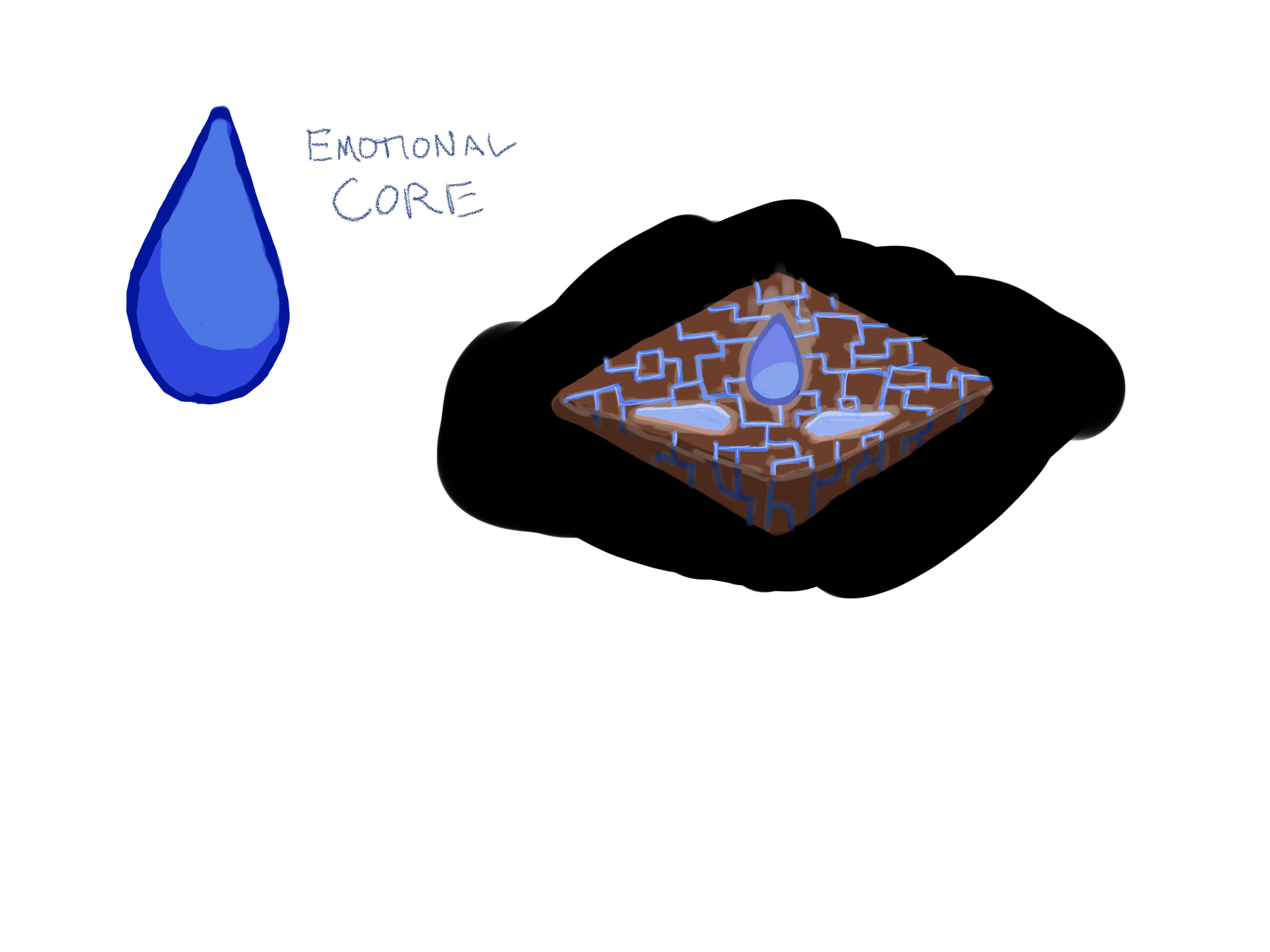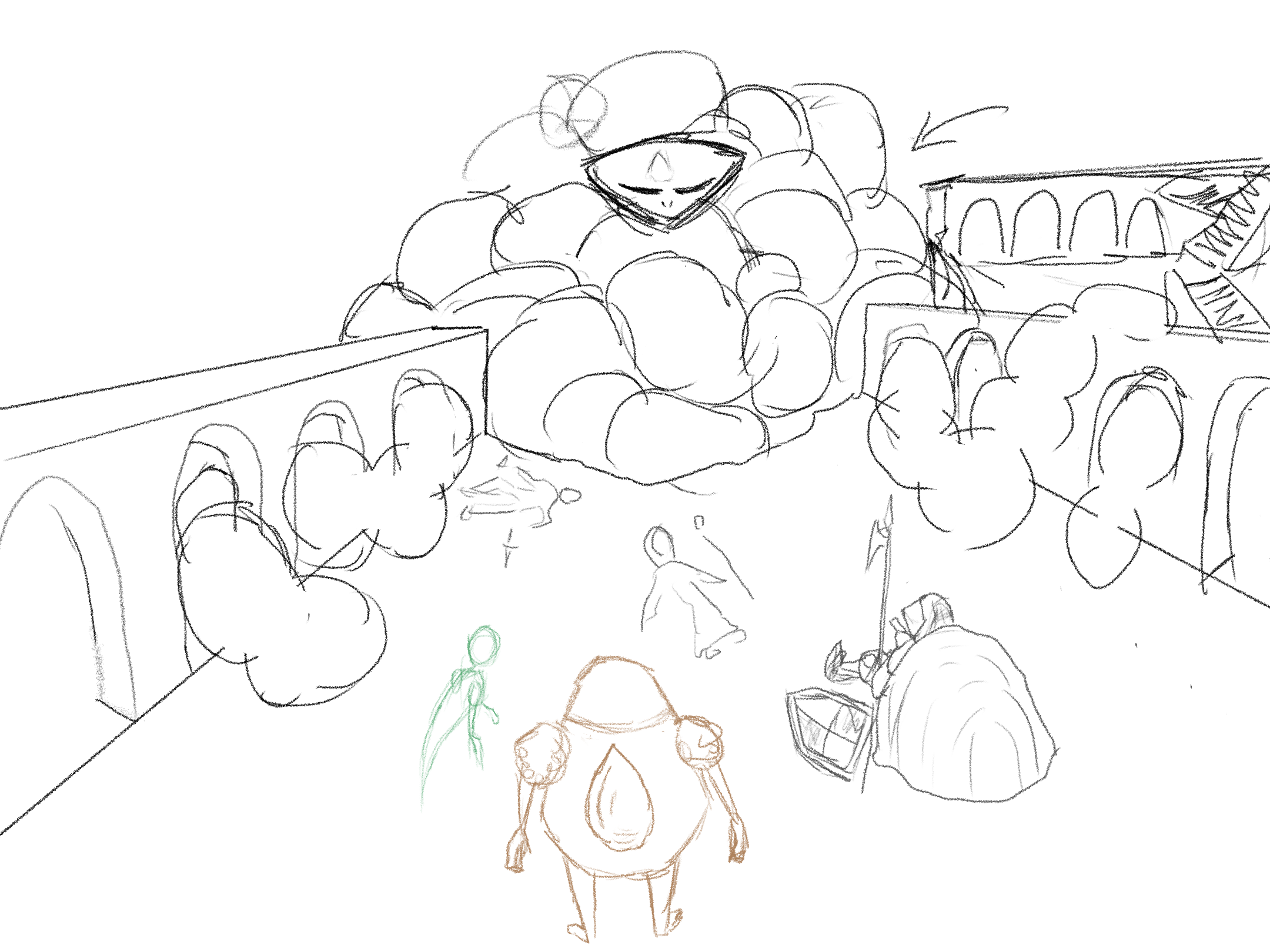Producing Game Jams
In winter of 2023, I participated with a team of 5 in the BigMode game jam. You can play our project below:
One thing I’ve discovered during past game jams is that trying to do art and programming at the same time doesn’t work well. So I wanted to test if I could do Production and Art Direction on a game jam. In order to make that work, I needed to find someone who I could trust to take on programming tasks. I decided I wouldn’t do this jam unless I found the right collaborator. Pyreo contacted me about my posting, and he definitely had the skills needed to develop a game. Once those core members were settled, I went about filling out the rest of the five seats we had on this project. We ended up getting an additional developer, another 3D artist, and a UI/UX designer to help out on the team.
Our production schedule for the project.
Once we had our team of five - Pyreo, Pterafier, Bryan, Alan, and me - It was time to set up meetings and timelines. I came up with a development timeline based on the game jam’s schedule. It was split into four phases. First, we would come up with the concept. Then by the end of the second phase, we should have all the base mechanics of the game working. Essentially, it would be playable, but not pretty. That would get fixed in the third phase, refinement and expansion, where we could identify mechanics or game balance that needed to be tweaked and change them. In our final phase, we wouldn’t touch mechanics anymore, we’d just add quality of life touches and test builds. Based off of my past experience, the game needed to be somewhat playable by halfway through the project. This timeline was a way of setting clear expectations for the team.
Concept-to-model for Pebble, our Golem friend. I did the 2D art and our 3D artist did the model.
Our concepting phase went well. We were all able to discuss the kind of game we wanted to make, and we settled on this idea of having to escort our friend Pebble to the top of an ancient Dwarven city. The Great Evil, our boss, was running rampant because it was missing the emotional control center - which is Pebble. Our hero was one of the many warriors that fell attempting to subdue the great evil. We lived on as a ghost, able to possess the fallen and use their powers to help clear a path for Pebble as the boss spawned monsters around itself. Mechanically and narratively, we found ourselves in a happy spot. I enjoyed sketching out various concepts and working with another 3D modeler to bring those visions to life. The one piece of the puzzle that was missing at this point was the level design and boss design for our game. Pinning down the details of the mechanics more clearly during the concepting phase will help with future projects.
Concepts of the boss and the level vs. the final version
By the end of the second phase, alarm bells were going off for me. We hadn’t hit our goal of having a playable game. Some of the mechanics were put together though, so I thought we could move that goal back a bit and still hit our target. Unfortunately, during the next week, most of the team got extra busy and had reduced hours compared to the first one. By the polish stage, it was clear we had gotten far behind schedule. I called an emergency meeting and we reprioritized and cut scope as much as possible. At this point, we were in phase 4, and the game still wasn’t playable. I wrote up scripts to play in the beginning and end of the game that could be put in to provide context, and made sure we prioritized having a win condition and actual combat encounters in the real level. Stepping away from programming had been a big help for me in accomplishing the modeling and concepting goals, but it also meant that I was less aware of the roadblocks that the team had. So keeping in touch with the programmers, and specifically asking about any roadblocks they have, would be key to a project like this.
My concept art and the 3D artist’s rendering of the rogue and wizard.
In the end, we fell into a common game jam pitfall - overestimation. Our team felt capable of achieving the scope we drafted in the beginning, but it was too much. The margins were thin enough that smaller setbacks snowballed into the loss of larger features. For example, our player character models were only added to the game on the last day - and we found that the rig we had used wasn’t compatible with Unreal Engine. This experience re-emphasized to me how important it is to get the game working and playable as early as possible. Part of that is being much more specific about how the game development process works. For example, how will we approach game design on the project? Is there a specific game designer who thinks up mechanics, or will the programming team test things out to come up with fun gameplay?
Earth Slime enemies from concept to animation, all done by me.
For game jam projects in the future, I would like to design how the process should work from the ground up ahead of time. Having a very short pre-production phase on this project meant that the production resources were a bit thin, and working with a new group means that pipeline should be communicated and re-communicated many times. In fact, I feel like building out a “Game Jam Production Resources” Template would be incredibly useful for future jams. Having a simple Game Design Document template, a Schedule template, Asset Creation Guidelines, Programming Guidelines, and a Task Tracking Template would create a starting point set up for success.
I will also say that when wearing multiple important hats on the project, it is key to set aside time for each of them. For example, dedicating 2 hours each week to Production and Production only might have helped catch some of the issues our team had.
All in all, this was an enjoyable project, and I can’t wait to apply what I learned on this jam to the next one!















